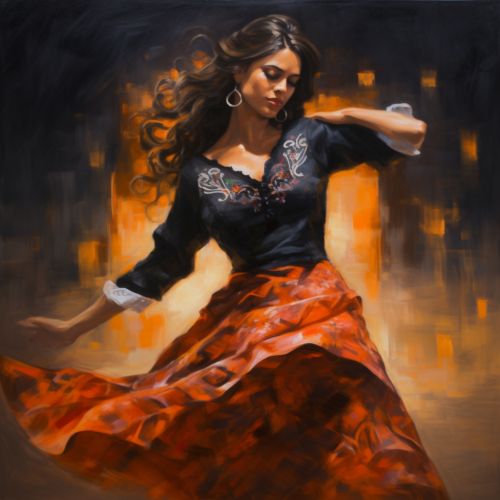Flamenco
Origins and History
Flamenco is a form of Spanish folk music and dance that originated in the region of Andalusia in southern Spain. It is a highly expressive, passionate art form that combines singing (cante), guitar playing (toque), and dance (baile).


The exact origins of flamenco are somewhat unclear due to the lack of historical documentation. However, it is generally agreed that flamenco developed over several centuries from a fusion of various musical traditions, including those of the Romani, Moorish, and Jewish communities in Spain.
The first definitive reference to flamenco dates back to 1774, in the book "Las Cartas Marruecas" by José Cadalso. However, the art form likely existed for several centuries prior to this, evolving gradually over time.
Styles
Flamenco is not a single style of music and dance, but rather a collection of different styles, or palos. Each palo has its own distinctive rhythm, melody, and lyrical theme. There are over 50 different palos, although only a handful are commonly performed today.
Some of the most popular palos include the soleá, a slow, introspective style; the seguiriya, a deeply emotional and often tragic style; and the bulerías, a fast, lively style often used to close a flamenco performance.
Performance
A typical flamenco performance involves a singer, a guitarist, and a dancer, although larger groups (known as cuadros) are also common. The singer and guitarist provide the musical accompaniment, while the dancer interprets the music through movement.
The performance is highly improvisational, with the musicians and dancer responding to each other in the moment. This requires a deep understanding of the rhythms and structures of the various palos, as well as a high level of technical skill.
Cultural Significance
Flamenco is deeply ingrained in the culture of Andalusia, and it is considered an important part of Spain's cultural heritage. In 2010, UNESCO declared flamenco a Masterpiece of the Oral and Intangible Heritage of Humanity, recognizing its cultural, historical, and artistic value.
Flamenco is also a popular art form worldwide, with flamenco festivals, schools, and performances found in many countries outside of Spain.
